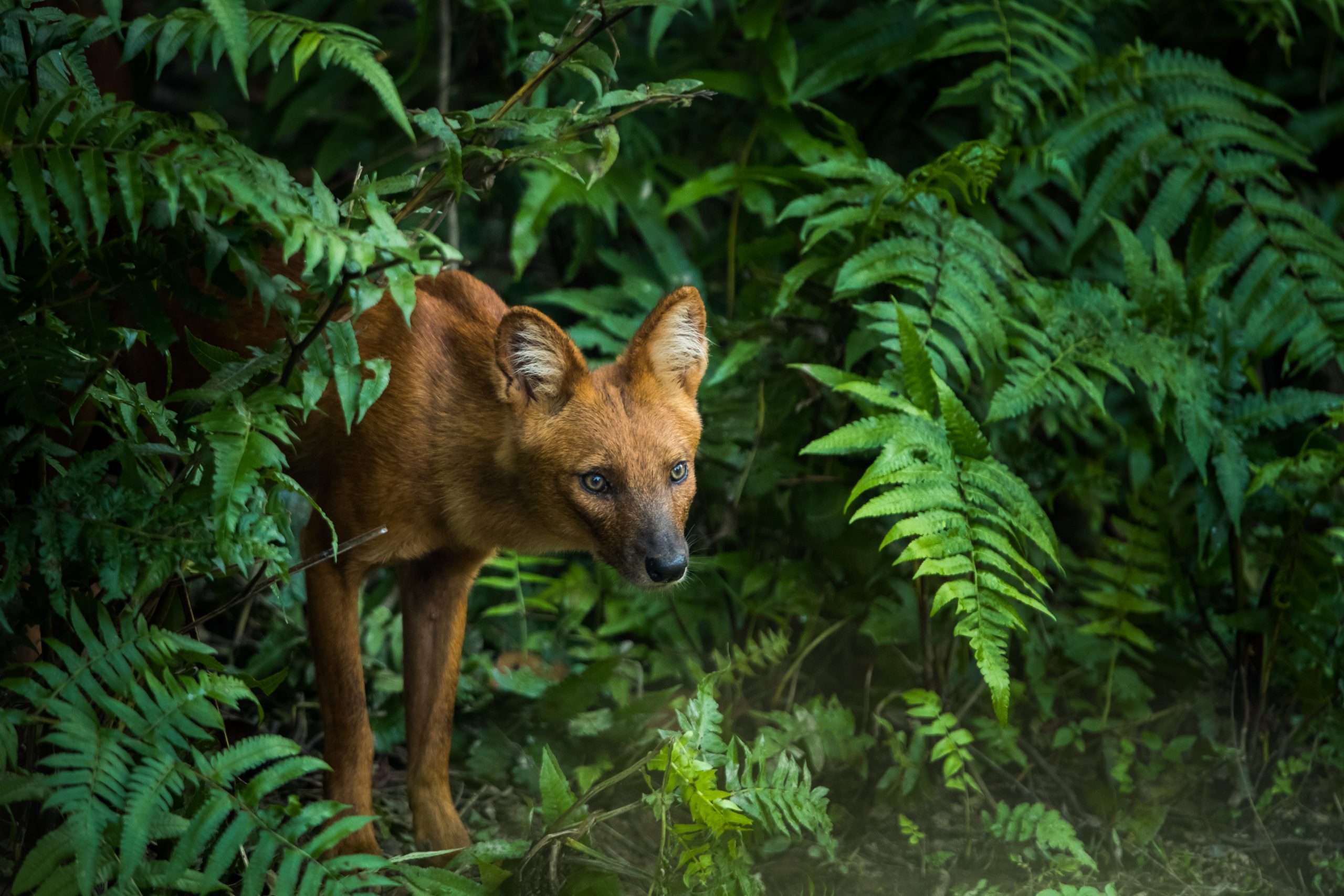
Dholes: Asia’s Elusive Wild Dogs
The dhole (Cuon alpinus), also known as the Asiatic wild dog or whistling dog, is one of the most fascinating and underappreciated predators in the animal kingdom. Native to Central, South, and Southeast Asia, this highly social and intelligent canine plays a vital role in maintaining the balance of forest ecosystems—but remains largely unknown outside of wildlife circles.
A Unique Canine Identity
Dholes are unlike any other canid species. Though they share a resemblance with foxes in terms of size and reddish coat, they differ in key ways: they have rounded ears, bushy black tails, and only 40 teeth instead of the usual 42 seen in other dogs. Their lithe bodies and long legs make them agile hunters, capable of incredible endurance across rugged terrains.
Masters of Teamwork
One of the dhole’s most impressive traits is its highly organized social structure. They live and hunt in packs that typically range from five to 12 individuals, though groups of over 20 have been observed. Unlike wolves, dholes exhibit more cooperative behavior, sharing food more equally and showing less dominance-based aggression within the group.
Their communication is just as remarkable. Dholes are known for their high-pitched whistles—a series of chirps and squeaks used to coordinate during hunts or to find each other in dense forests. This distinctive vocalization has earned them the nickname “whistling dogs.”
Diet and Hunting
Dholes are apex predators and primarily hunt ungulates such as deer, wild boar, and even livestock when wild prey is scarce. Using endurance and teamwork, they chase prey over long distances, often wearing it down before the final attack. Unlike solitary big cats, dholes bring down larger animals through sheer coordination and persistence.
Habitat and Distribution
Dholes prefer forested landscapes, from alpine meadows in the Himalayas to tropical rainforests in Southeast Asia. Once found throughout Asia, their range has drastically shrunk due to habitat loss, depletion of prey, human persecution, and disease from domestic dogs.
Today, significant populations remain in protected areas in India, Thailand, and parts of the Russian Far East. Conservation efforts are ongoing but complicated by the dhole’s secretive nature and lack of public recognition.
Conservation Status
The International Union for Conservation of Nature (IUCN) classifies dholes as Endangered, with fewer than 2,500 mature individuals left in the wild. Their decline is linked to deforestation, loss of prey base, and conflicts with humans. While they are protected in many countries, effective conservation requires stronger habitat protection and public awareness.
Why Dholes Matter
Dholes are more than just elusive predators—they’re essential to the health of the ecosystems they inhabit. By regulating prey populations, they help maintain forest structure and biodiversity. Their disappearance would disrupt these natural systems in ways that might not be immediately visible but would be deeply felt over time.
Final Thoughts
Often overshadowed by tigers and leopards, dholes deserve a place in the spotlight. Their intelligence, social harmony, and ecological importance make them one of Asia’s most compelling yet misunderstood carnivores. Protecting them means preserving the wild heart of Asia’s forests—and all the life that depends on them.
If you ever find yourself trekking through an Asian jungle and hear an eerie whistle in the distance, stop and listen—you might be close to one of nature’s most fascinating canines.
More photos below ↓









Disclaimer: This blog post is for edutainment purposes only and may not be entirely accurate.






